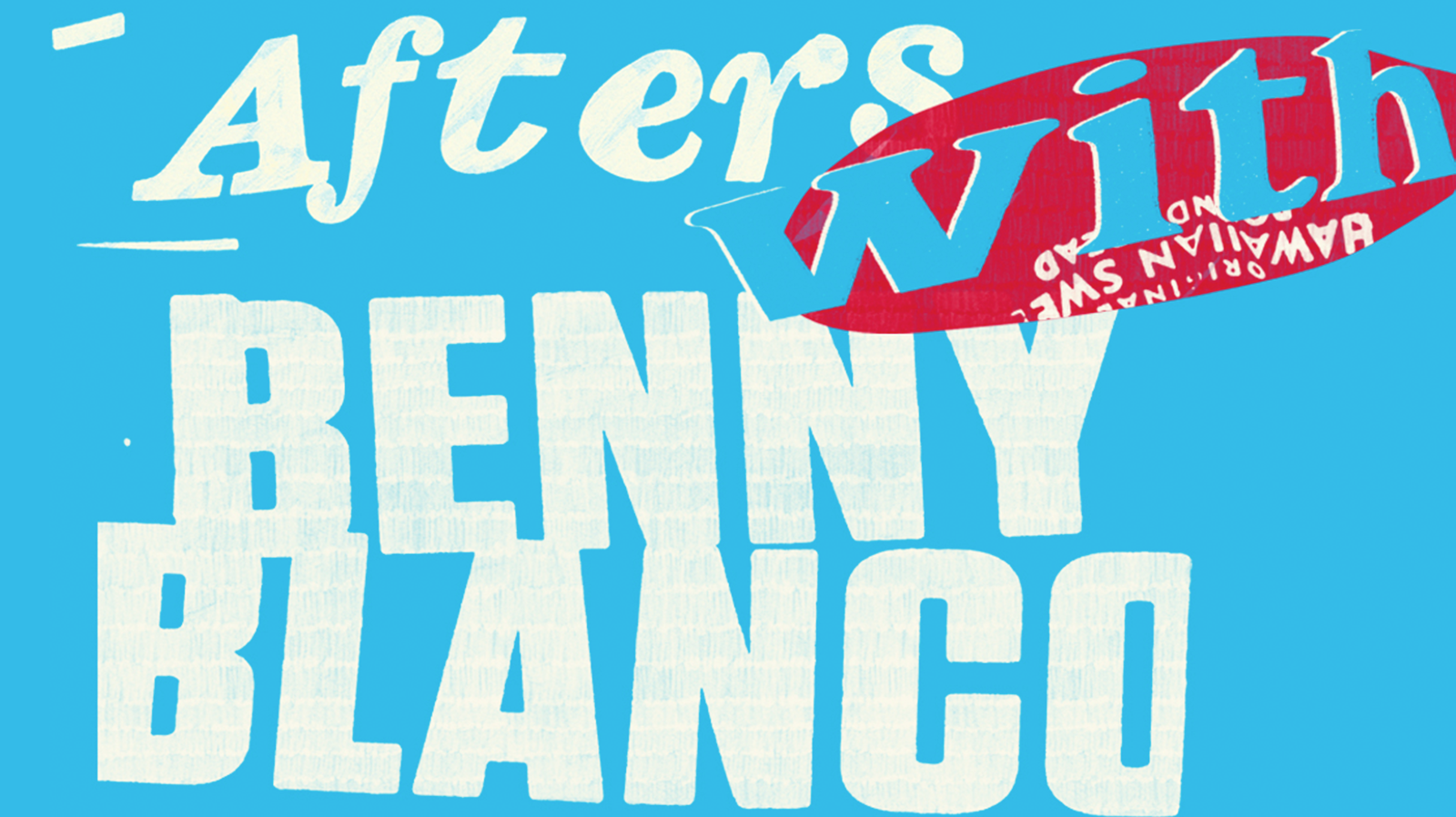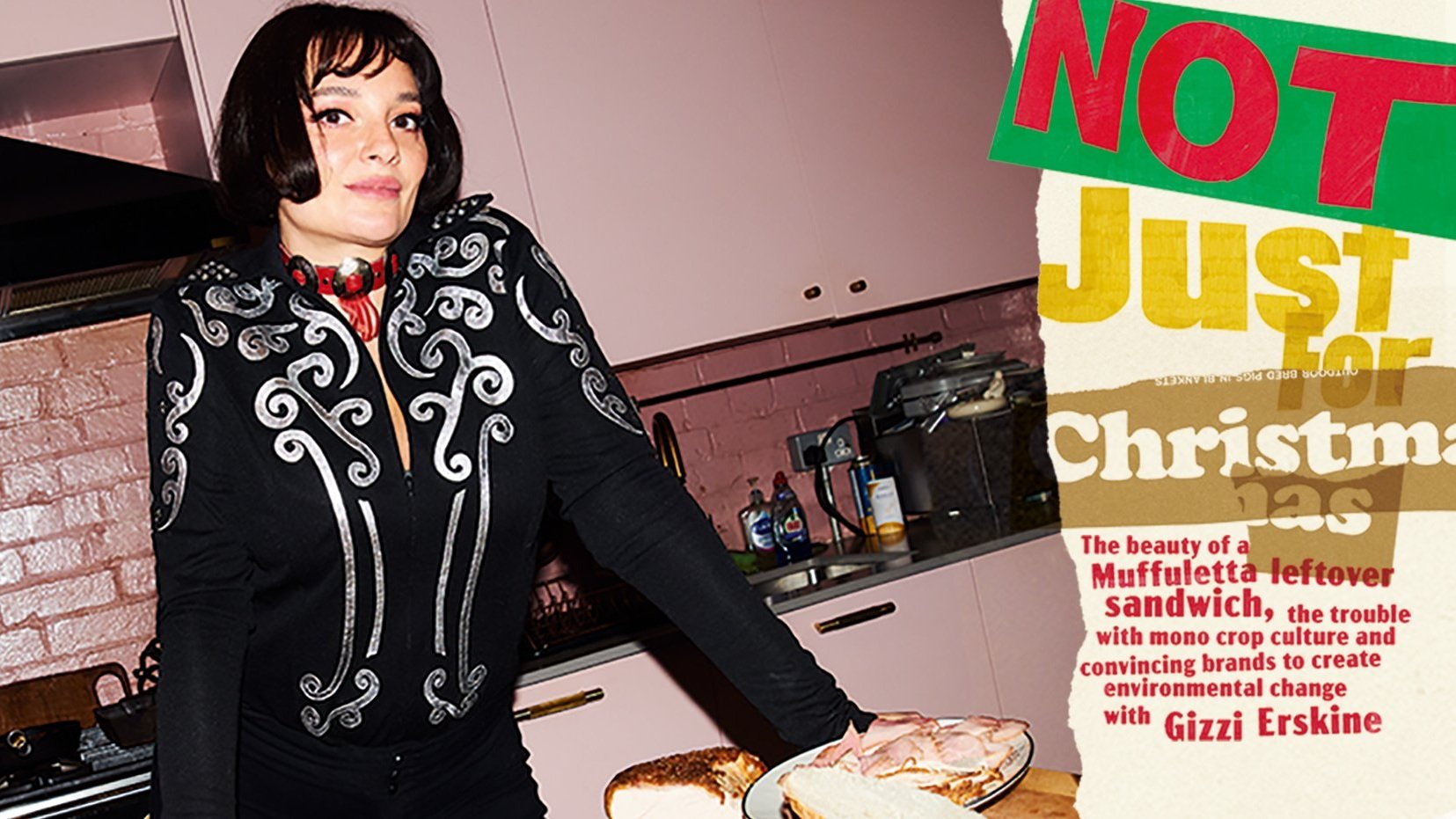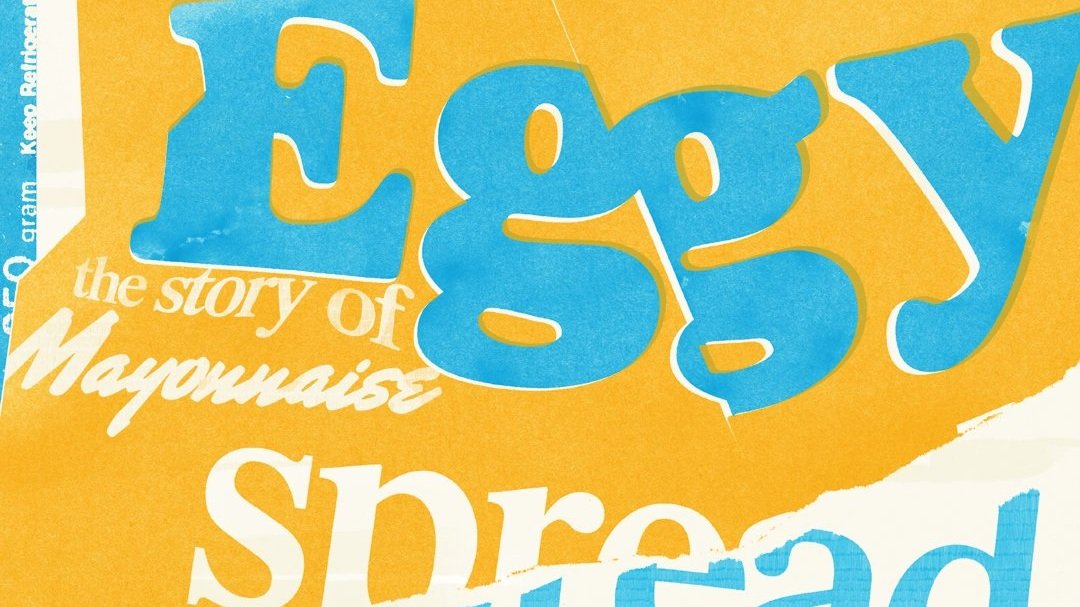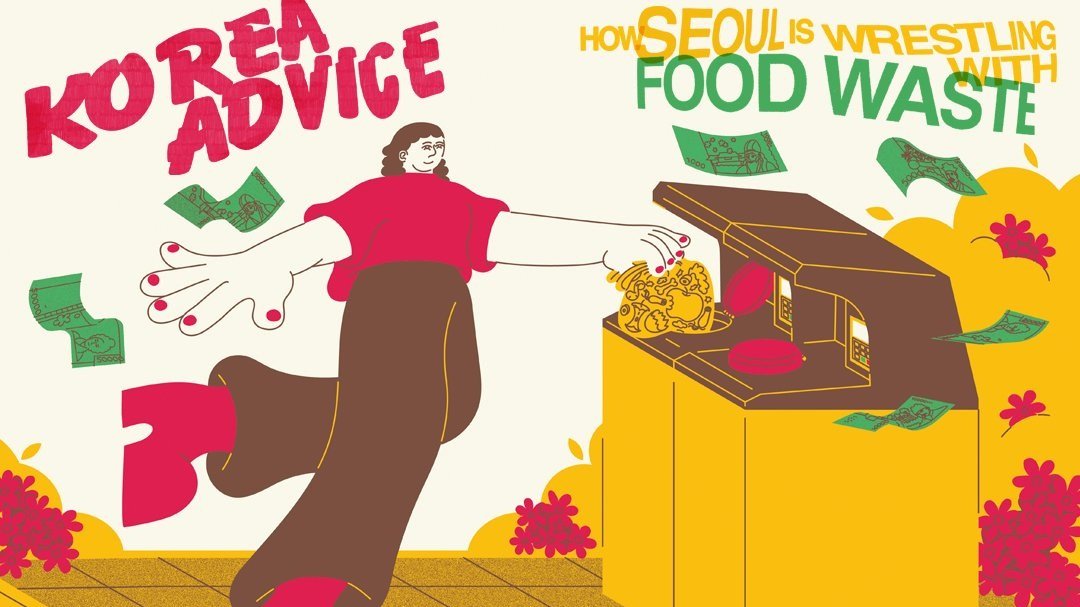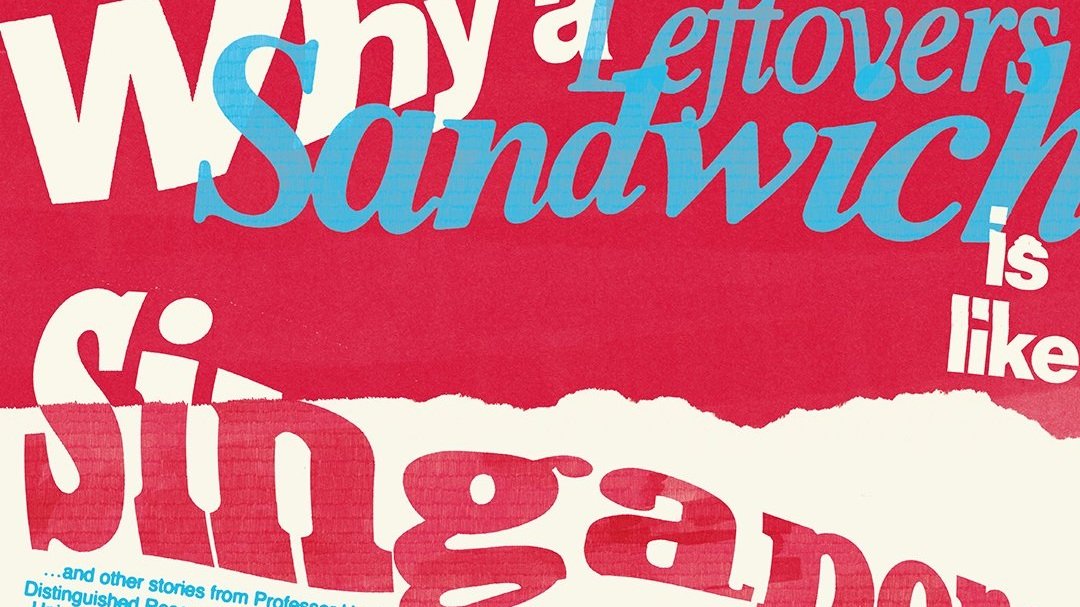Eggy Spread - The Story Of Mayonnaise
Words David Wright
Illustration Tim Lahan
THE FIELD OF battle has been becalmed, heroic beasts lie cut to pieces and once-moist flesh is achingly dry. The scavengers descend upon the feast, piling high their spoils, wrapped in blankets of bread. All is monochrome and maudlin until the rejuvenating salve is spread over the landscape of parched turkey breast, cold potato, pickles and cranberry sauce. We pass from Kansas to Oz, stepping into bright Technicolor. What is this sorcery? Surely this could not be the work of mortals? We must begin our quest here at the cold banqueting table as we set out to retrace the journey of the dime store ambrosia - mayonnaise.
Picture the scene. Late last century, an adolescent boy (me) is being shown the next big thing to hit the sandwich world - the tortilla wrap. A crafty salesman demonstrates how these are filled and folded, the crescendo to his edible origami is the phrase “the mayonnaise is like the glue”. I learnt a few things from this encounter, not least that I didn’t need someone to show me how to fold a tortilla around some roasted vegetables, but I guess that this was at a time when YouTube was just for videos of people falling over. It also posed a question - who the hell are you mayonnaise?
Pop the lid on a jar of mayo and crash a spoon into the velvety smooth gloop, this homogenous sauce is a blank canvas for all your desires. “I’ll be whatever you want me to be” it whispers as you hold it close to your ear. It dances across the middle ground of flavourful sensations, a little sweet, a smidge salty, smooth, moist, spreadable, spoonable - what kind of genius could have come up with such a marvel? This emulsified people pleaser has a chequered past however and one that’s not entirely reliable. I guess even the whitest condiment on earth has dirty little secrets. Take my hand and walk with me as we dig a little deeper into the history of mayonnaise...if that’s even its real name.
Where did mayonnaise come from? Was it a gift from the gods? Is there a Promethean figure who bestowed the knowledge upon humanity to rid the world of dry sandwiches? The most trollied out story is that it’s the result of a famous military victory that no-one remembers. We can start there, board the plane with me to the Balearic island of Minorca.
In 1756 a French Duke (Louis François Armand de Vignerot du Plessis, Duc de Richelieu) took control of this small island off the east coast of Spain from an Englishman (Admiral John Byng) so inept he was put out of his misery. After failing to “do his utmost” to protect the world from the apparent invention of mayonnaise he was shot by 13 mayo-phobes in Portsmouth, England. I have personally eaten mayonnaise in Portsmouth so can confirm attitudes have changed.
How could the most pacifying sauce on Earth have its roots soaked in the blood of battle? One version attests that the fussy Duke was fond of a sauce made from cream and eggs (sounds like a custard fan to me), the panicked chef not having any cream to hand did what any online supermarket would do and substituted the dairy product for olive oil. This was such a famous meal that nobody mentioned it for nearly 50 years. Alternatively, some suggest that the natives in the Minorcan port of Mahón had been gulping down ‘mahonnaise’ for years and happily shared the recipe with their new stewards. Necessity is after all the mother of invention and an island with limited cream and a slew of olive oil has the bones of this velvety delight. I have been to Minorca and was excited by the prospect of visiting countless museums dedicated to mahonnaise but alas, it seems even the Minorcans don’t fully believe the stories.
Duct tape, canned food, microwaves, super glue, silly putty. Wartime has provided humanity with the unique collective focus required to bring about some truly life-changing inventions. Did one of the great condiments really come about through conflict?
My gut tells me this is more of a story of culinary imperialism. The Spanish only started hawking ‘salsa mahonese’ in the 1920s and by then mayonnaise had already been slathered across New England lobster tails for decades. France and Spain “two households, both alike in dignity” (as Shakespeare may observe) were typified by two similar sauces - mayonnaise and aioli. The likelihood is that the idea of making peace between the polarising properties of oil and water was an old one going back to whenever humans invented a whisk and elbow grease. Even in the first cookbook we know of, De Re Coquinaria –compiled sometime in the 5th century AD – emulsions of oil and vinegar are present. Our silky friend here makes up one of the five mother sauces of haute cuisine, and that should tell us something - it’s basic babes. The mafiosi quintet comprises of the following; Big Benny Béchamel, Vinny Velouté, Enzo Espagnole, Little Timmy the Tomato and Micky Mayonnaise.
One of the most proficient chefs to ever hold an egg was Marie-Antoine Careme. Abandoned as a child on the stinky streets of 18th century Paris, he made a career for himself, first as a pastry chef and later as the “king of chefs and chef of kings”. He was famous for adopting the ‘a la Russe’ style of service, which basically means you pile a table full of food and let the rich people feast like hogs at the trough. This made sauces that were stable and could be served cold, valuable – such as our old friend mayonnaise. It was indeed Carême who suggested the name came from ‘manier’ to handle, and should
be properly called magnonnaise – which is the kind of linguistic nonsense that saw me placed in the bottom set for French even though Madame De Massol appreciated my love of French bread. This is all getting a bit petty, a Latin squabble never to find a clear resolution. Luckily I’ve bagged us some imaginary tickets for Concorde (1st class) and if you’ll join me we have a date in the New World.
Whatever its origins, the real shift in fortunes for this sauce of squabbles between European neighbours came about after it hit the shores of North America. The clear waters of the Hudson were choked with oysters “so big you’ll have to rear back to swallow” as Joseph Mitchell puts it, lobsters the size of labradors and up the coast the oceans positively spat cod fish onto the shores. The big ol’ birds that looked like the guinea fowl from Turkey were cooked and everything this land had on the menu seemed to need mayonnaise. Mayo was the key to unlock the cuisine of the new world. Who cared if it was French or Spanish? It was American now. It just needed someone to stick a flag in it – or tie a blue ribbon around its neck.
In 1913, Richard and Margaret Hellmann set up a deli in Manhattan and while Richard had the name, it was Marge who had the recipe. Their “blue ribbon” mayonnaise was flying out by the roaring ’20s and fast becoming a staple of any American condiment cupboard. It was still at this time an artisan product, needing careful storage and was oblivious to its own impending globalisation. The trouble with pre-industrialised food is that it’s alive, and while that’s a good thing for the discerning diner eating fresh clams on the half shell - it’s bad for business. With pasteurised egg yolks mayonnaise became bulletproof, extending its shelf life by months and opening up the possibility of shipping it great distances. Spread the spread baby.
The industrial food system is like ‘a la Russe’ on steroids, with the mantra ‘stack high the tables of the world with food that never goes bad and let the bastards eat themselves to death’. Like the man who folded a tortilla for me said, ‘mayonnaise is like the glue’, the glue that holds all this dry calorific crap together. As pre-sliced white bread goes stale on the sideboard, this new nuclear version of mayonnaise plays the part of necromancer – bringing back from the dead the food stuffs that have edged humanity closer towards it. It’s also the progenitor to many offspring, from tartare sauce to Thousand Island dressing, wasabi-mayo to remoulade. Pandora’s condiment box was open now, and the lid was too slippery to close again. In 2011, the New York Post published figures showing the USA bought over $400m worth of mayo alone – I’m no mathematician but even I know that’s a lot. Western civilisation was on a slip ‘n’ slide to obesity and the white stuff was our lubricant of choice.
Robin Williams described gentiles as “...people who eat mayonnaise for no reason” and many of us have become proficient in using it with wild abandon. I mean, I even made a chocolate cake with mayonnaise in it once – it was surprisingly delicious. It is exactly this association with WASPs (white anglo- saxon protestants) and their descendants that has caused mayonnaise to become a battleground, the culinary symbol of cultural whitewashing. An article from 2018 in The Philly Mag cried forth “How Millennials Killed Mayonnaise” and it goes on to paint a picture of young loathers of creamy, bland mayo. Pass the chimichurri or the peanut rayu but leave that unwoke, backward sludge in the cupboard thanks grandma.
Even if you don’t care for politicising your food, some people just find mayonnaise disgusting. If you say it out loud it does seem a bit strange. Here’s the basic recipe: take the unfertilised embryo of a chicken at room temperature and whisk with flavourless fat from some seeds. Dribble in a little vinegar or lemon juice, a pinch of salt and a good wrist workout should yield something that has the appearance and consistency of that old radiator paint you left in a cupboard three years ago. Now where’s that leftover chicken?
Jimmy Fallon, the big shot US talk show host told Melissa McCarthy he despises it for its similarity to pus. But he also told Kendall Jenner he hates it because as a child he got his head stuck in some railings and his grandma used the condiment to grease his head up and get him out. He really doesn’t like it. So, not everyone likes mayonnaise, big news. I love the stuff however, and I’m not afraid to shout it from the rooftops. If I was to be any condiment, I’d probably be mayonnaise. I’m not energetic enough to be ketchup, I’m not mean enough to be mustard and I’m too reserved to be BBQ sauce. I’m a pale, slightly fatty friend to most and I’d like everyone to get along wrapped in a glossy pacifying coat made of silk.
The story of mayonnaise seems to me to be the story of most food. An ambiguous start leads to someone perfecting the recipe and after the Industrial Revolution everything gets out of hand. Once it becomes famous, everyone claims to have known it really well when it was younger, way better than anyone else. We all had a friend in the playground that claimed to have invented putting crisps in their sandwiches, and we all knew that kid was talking shit - even if we just rolled our eyes and finished our yoghurt. At this very moment we seem to have enough perspective to gaze upon the full field of the gastronomic landscape and wonder at how we ever came up with this or that, why we went one way or the other. We’ve entered a food crisis in the literal sense – a turning point. One thing is for sure, when we come out the other side, our old friend mayonnaise will welcome us back with an enrobing embrace – ready to make everything okay, not brilliant, just okay.







